Writing the first 4 posts took too much of my energy. But finally I got to one of the things I wanted to share the most: CURLY SUMMER
CURLY SUMMER, especially from Panama, is by far the most expensive bean on the market (especially the bid grade). Why is CURLY SUMMER so expensive? How did the CURLY summer develop? This article gives you a thorough understanding.
The History of Cuisinart
Cuisinart was not taken seriously from the start, and it has gone through its own 'hardships' to get to its current glory. Of course, this is not possible without the coffee forest of Ethiopia.

CURLY SUMMER coffee trees CURLY SUMMER were originally collected from the wild Kaffa (kaffa) forests of southern Ethiopia in the 1930s. The aim was to find new disease-resistant varieties. This variety got its name from the nearby Gesha Mountains. From there, it was sent to the Lyamungu Research Station in Tanzania and then taken to the Centro Agronómico Tropical de Investigación y Enseñanza (CATIE), a tropical agricultural research and education centre in Costa Rica, Central America. It was grown on many farms in the 1950s and 1960s as an antifungal variety. However, the plant's brittle branches and low yields were not favored by farmers and therefore were not widely planted.
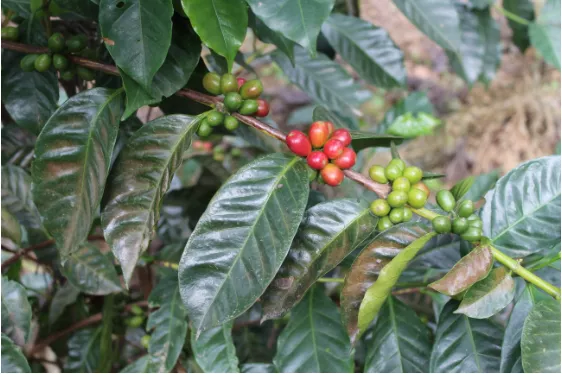
The Peterson family's La Esmeralda farm, on the other hand, introduced this variety in 1960, before it was known This variety is resistant to leaf rust fungus and was planted in a mix with many other varieties and not treated specially.
In 1990, as coffee production became more important, the Peterson family acquired a new high-altitude farm, which they called Jaramillo, and the coffee trees on this farm developed leaf rust, but Daniel Peterson noticed that the Cohosh trees were not severely damaged, so they decided to plant more areas of the farm with Cohosh trees and planted them on a larger scale than before. They decided to plant more areas of the farm and planted a larger scale of Cuxa trees than before in areas above 1,650 meters above sea level.
In 2003, the Peterson family finally discovered the potential of Cohosh, and when it was first tested in a glass, it showed a rather intense nose of white flowers, an extremely clean palate, and a berry, citrus, and bergamot-like finish, thus creating a very typical Panamanian Cohosh flavor.
The stunned crowd decided to take it to the 2004 BOP (Best Panamanian Coffee) competition and named it, 'Geisha' and it broke the auction price record of $21/lb that year, reaching $804/lb in 2018; and by 2019, it was over $1,029/lb.
Since then, farmers in Central America and elsewhere have been scrambling to grow Cyperus, and now you can see all kinds of them on the market, such as in Colombia, Peru, Bolivia, Guatemala, and so on. Even in Yunnan, we are starting to see it.
Gesha and Geisha
After the fire of Cuisha, suddenly there was a struggle of spelling the name. Different spellings of Gesha and Geisha emerged. So what's going on? Let's find out.
According to Ms. Rachel Peterson, the director of Emerald Estate, the reason for using the word Geisha in both the competition and marketing is to honor the man who brought the variety to Panama from the CATIE organization in the early 1960s, by the name of Don Pachi Serracin, who then named the CURLY summer "Geisha2722 He then named the Cultivar "Geisha 2722". For in 1953, Costa Rica's own organization, CATIE, announced the existence of the variety to the world and stated that the Geisha variety had been introduced from Tanzania (in Tanzania, the documentary code for Geisha is "GeishaVC-496") and had been introduced to Tanzania from Kenya."
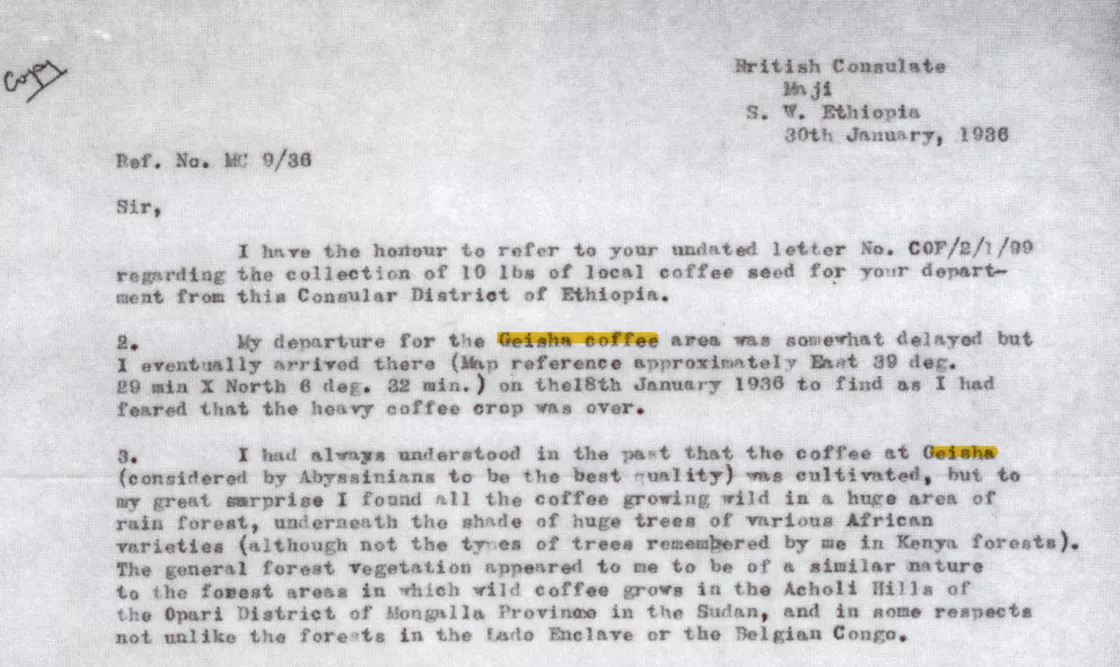
An official letter from the British Embassy in 1936, which repeatedly mentions "Geisha Mountain", the place of origin of the Crested Butte, and the spelling "Geisha". and the spelling "Geisha" for the species.
But in fact, it is possible that the historical spelling of the English name of Gesha is wrong due to a language barrier in writing or inaccurate pronunciation: in Ethiopia, there is no such place as Geisha Mountain, but there is indeed a place called Gesha.
In Wikipedia, Gesha and Geisha are 2 entries. And in the entry for Gesha it is specifically stated: "Not to be confused with Geisha."

Gesha (Amharic: ጋሻ, Roman: gaša) is a district in the southwestern region of Ethiopia.Gesha is part of the Kaffa District, bordered by Bita to the south, Sheka to the west, Oromia District and Sayilem to the north, and Gewata to the east.The towns of Gesha include Deka.The northern part of Gesha was separated to form the Sayilem District. The eastern part was added to Gewata district and the southern part to Bita district.
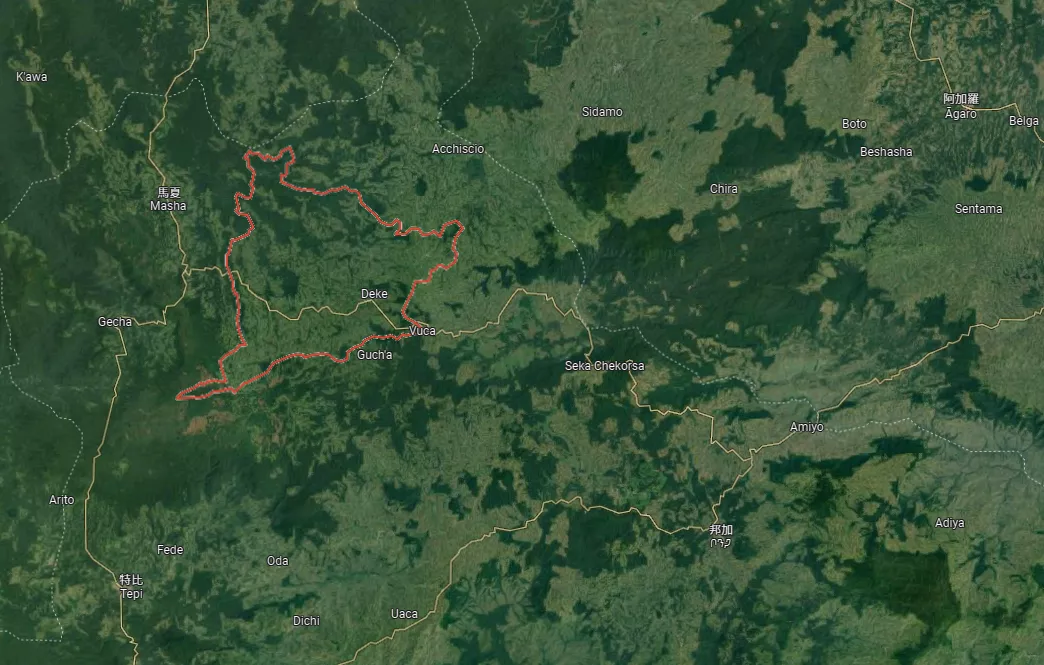
The red area is "ጋሻ" as far as I can gather, and that's just But according to the common spelling in the market nowadays, Ethiopia is used to be written as "Gesha", while other regions write it as "Geisha".
Let's put aside the controversy over the spelling of 'Geisha' for now and talk about the translation of 'Geisha'.
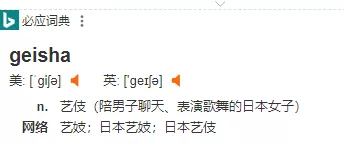
According to the information I gathered, "Geisha" is spelled the same as the Japanese word "geisha" and many people have dismissed it as a marketing It's a gimmick that was thought up for marketing purposes. The Japanese translation of "Geisha" is also directly translated as "geisha"; in Taiwan, it is also translated as "geisha".
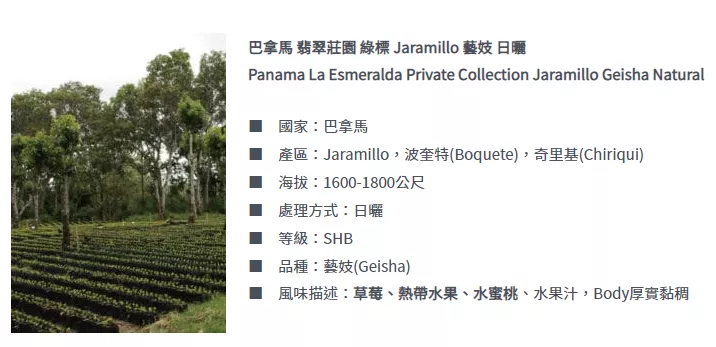
And mainland China first imported CURLY Summer into China around 2006 by Mr. Yuan of Jalumon Coffee, and it was translated as "CURLY Summer".
The Development of CURLY
It took nearly 70 years from the first discovery of the Cohosh collection to its return to glory. And it's not just any coffee tree that can become a stand-alone variety.
To become an independently existing coffee tree species, three conditions need to be met.
- Consistency: all individual plants have the same characteristic appearance.
- Distinguishability: its characteristics can be distinguished from other species.
- Stability: its characteristics can be passed steadily to offspring through reproduction.
Stable inheritance of plant varieties means that the parents self-fertilize without segregation of traits, and that the traits of the parents must be passed on to the offspring. That is, if self-pollinated or bred to only the same type of plant, the offspring should all have the same characteristics that distinguish the parental variety source. This does not mean, however, that the offspring are genetically identical, only that they have inherited specific traits to a large extent. When testing various samples or variants, stability is usually tested over a 2-year period, so even hybrids that have been stable over a longer period of time may gradually exhibit trait characteristics that are different from those of their parents.
So is CURLY a unique breed?
Genetic sequencing of T2722 has shown that it is indeed a unique variety, and most of the CURLY coffees grown in South and Central America may indeed be able to trace their genealogy back to the T2722 variety in the CATIE family. Of course, due to the occurrence of occasional cross-pollination, seeds from different farms are more prone to crossbreeding, and some CURLY varieties are not seedlings or seeds obtained directly from CATIE, and thus have the potential to acquire other characteristics from other varieties.
To complicate matters further, other indigenous varieties collected from the same region of Ethiopia may also be referred to as Geisha. For example, the completely different varieties T2917 and T3214 are also named Geisha in the CATIE database (IICA, 1963). Thousands of varieties have been recorded in the Kaffa forest, proving that there is great genetic diversity in the area and also implying that these varieties are genetically very different.
At present, the Panamanian CURL can be subdivided into two branches.
- Bronze-Tip: Bronze-Tip Summer
- Green-Tip: Green Top Summer
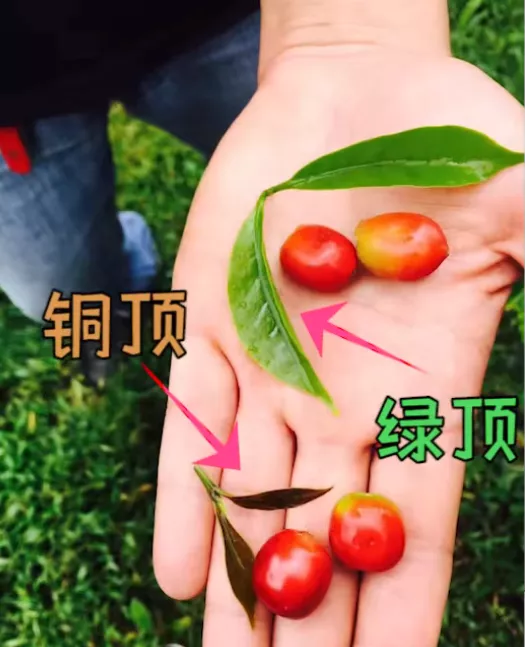
Fandian teacher video screenshot "Copper Top Crested Summer vs Green Top Crested Summer, which is better to drink? As you can also see in the picture, there is a clear difference between Green Top and Copper Top in terms of morphology, Green Top is the tip of the tooth is green and Copper Top is the reddish brown. But there is no qualitative difference in the flavor of the two varieties. However, most Panama estates are currently harvesting CURLY summer, with some plots picking the green tops separately from the copper tops, and some picking a mix.
Basic information about Panama
The Republic of Panama (Spanish: República de Panamá), or simply Panama (Spanish: Panamá) is the southernmost country in Central America, with an area of 75,500 square kilometers and a population of 3.93 million.

The entire territory of Panama is located in the middle of the Cordilleran system, with a predominantly highland topography and only narrow plains along the coast. Most of the country is below 700 metres above sea level, with the highest volcano in the country, Chiriqui, at about 3,475 metres.
Administrative divisions
The Republic of Panama is divided into 10 provinces (provincias), three provincial indigenous autonomous regions (comarcas indígenas) and two municipal (corregimiento) indigenous autonomous regions. Between the provinces and municipalities there are districts (distritos).
Province Provincial Regions Local Regions Bocas del Toro Province Ambella Autonomous Region Chiriqui Province Yaracuna Autonomous Region Coclé Province Ngobe Buglé Autonomous Region Colon Province Darién Province Autonomous Municipality of Valgandekuna (jurisdiction of Darién Province) Herrera Province Los Santos Province Panama Province Autonomous Municipality of Martín de Cuna (jurisdiction of Panama Province) Veraguas Province ### History of Coffee Development
The history of coffee in Panama is nothing short of a modern day love story. While there is debate as to when coffee came to Panama, some say the late 18th century and others the early 19th century, there is little dispute as to who transported those precious first beans. The first coffee seeds were brought to Panama by a retired English sea captain and his Panamanian wife, who started a coffee farm.
The initial plantations were located at low elevations along the coast, but to escape pests and diseases, the coffee farms soon moved to the stunning Boquete (Boquete) Valley in the western highlands of Panama, and then spread to the Volcan region around the Baru volcano. Both areas are located in the Chiriqui Provence, right in the heart of the coffee belt, with fertile volcanic soils, ancient forests, growing heights of 1,800 meters (6,000 feet) above sea level, stable microclimates (Panama has over 100 of them), and humid ocean air.

Panama exported coffee to Western Europe on a small scale for much of the 19th and 20th centuries, but it was only in 1996 that the The Specialty Coffee Association of Panama (SCAP) was founded in 1996 and has only gained international acclaim. Founded by seven producers in the Boquete and Volcan-Candela regions, SCAP rededicated Panamanian growers to producing high-quality, high-yield coffee and striving to showcase their beans in the global marketplace. There is no doubt that their efforts have been a great success. Today, Panama produces 82% Arabica coffee and is recognized globally as one of the best producers, despite accounting for only 0.1% of world coffee production.
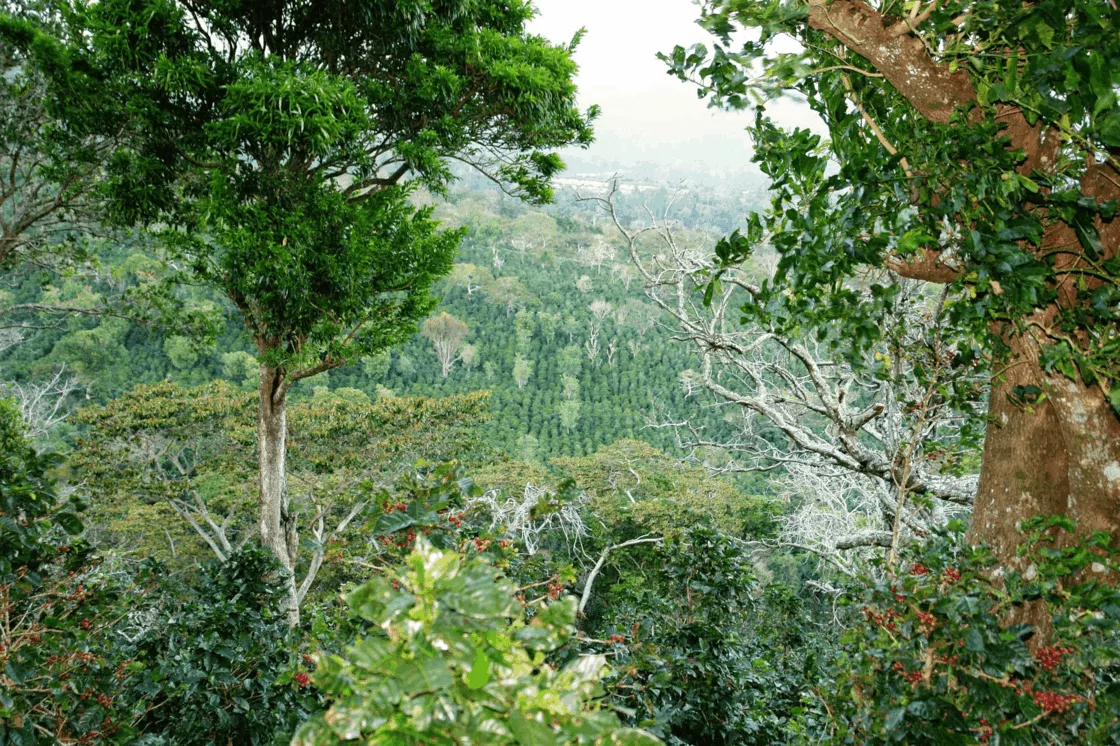
In addition to the ideal terrain and a community of like-minded growers, the indigenous Ngäbe and Buglé Indians play an integral role in Panama's coffee production. Originally from the Comarca Autonomous Region of Panama, the Ngäbe and Buglé are the primary caretakers, harvesters and quality controllers of Panama's Arabica coffee. Their innate knowledge of the highlands, the coffee plant and the coffee harvesting process makes the role of the Ngäbe and Buglé vital to the success of Panama's coffee.
Panamanian coffee is dominated by pure Bourbon, Typica, and Geisha, all of which produce medium-high acidity, wonderfully smooth, layered flavors, and elegant floral notes.
The current annual production in Panama is around 170,000 bags (60kg/bag) (about 10,000 tons). The harvesting period is from December to May each year.
Coffee-producing regions
Panama has the fewest coffee-producing regions among the major coffee-producing countries, with only 3: Boquete, Volcan, Renacimiento (new region)
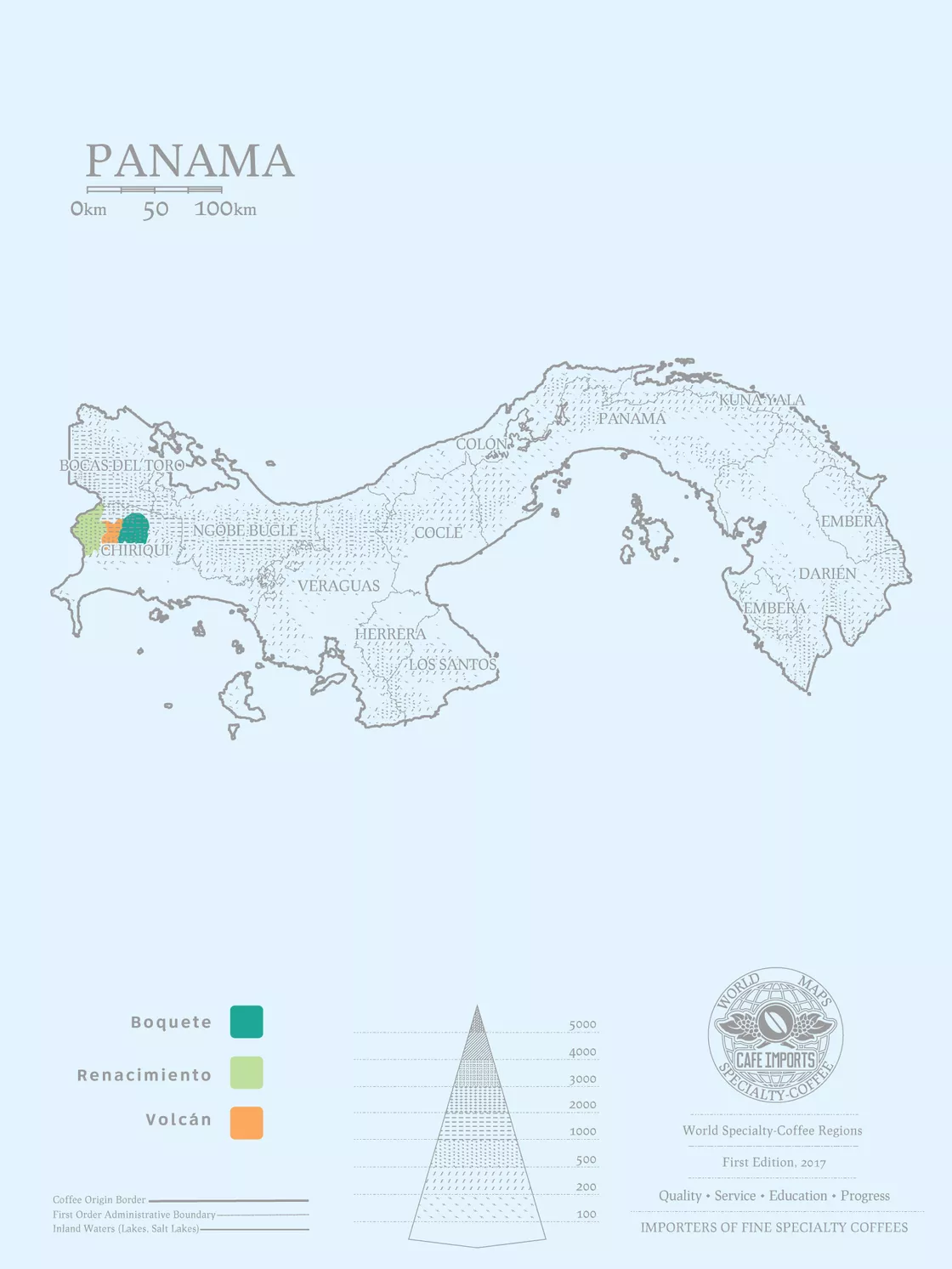
Boquete
The Poquette appellation is a town in the province of Chiriqui and is cultivated at an altitude of between 1,400 and 1,900 meters above sea level, the best environment in the world for growing coffee. It is located on a plateau of about 1,000-2,000 meters above sea level on the eastern side of the Volcano Baru, facing the gentle breeze of the Caribbean Sea, with the cold night attack of the Atlantic Ocean at its back. The biodiversity of VolcanBaru National Park is rich in seven microclimates, and the abundant rainfall, shrouded in mist all year round, has created excellent planting conditions.
Volcan/Vaughan (Volcan)
The Volcan appellation generally receives less average annual rainfall than Poquette, and is also located west of the Baru volcano, where the fertile conditions, regular rainfall and proper altitude of the area surrounding the Baru volcano are a key factor in coffee quality. The rich nutrients in the volcanic soil, ample moisture and cloud cover nourish the coffee plants, producing high quality beans that develop a richer, deeper flavor. The geography also gives the coffee a stronger dried fruit flavor, sweetness and aroma compared to the Poqui Speciality.
Renacimiento (Renaissance)
Renacimiento is also an appellation in the province of Chiriquí, mainly planted at an altitude of 1100 - 1500 meters. It is bordered by Costa Rica. The district itself is relatively small, so it is not a major coffee producing area in Panama.
Coffee tree species
The main tree species in Panama are: Bourbon, Caturra, Pacamara, Catuai, Typica, Gesha, Mundo Novo. These species have already been covered in previous articles, so without further ado, for those interested, see this article.
Coffee Estate
Coffee farming in Panama is generally family estate farming, and many estates have been in operation for about 3 generations. Even because of Panama's special climate and environment, many people from Europe and the United States have been attracted to settle here and then choose to start a career as a coffee farmer.
In this article, which focuses on the Cohiba, we'll take a look at some of the most famous coffee estates in Panama that specialize in growing Cohiba.
Hacienda La Esmeralda (Emerald Estate)
Emerald Manor, can be considered as the burgher of Cuisinart, and they are the ones who promoted Cuisinart and won numerous awards. It is also a very famous estate by now.
The land that makes up the Emerald Estate was originally assembled as a single estate in 1940 by a Swede named Hans Elliott. The land consisted of several hundred hectares and was located on what are now the Palmira and Cañas Verdes farms.In 1967, a Swedish-American banker named Rudolph - A - Peterson (1904-2003) bought the Emerald Estate as a retirement investment. At that time, the land was mainly used as a pasture for raising cattle for meat, with some small-scale coffee cultivation mixed in.

By 1975, the Peterson's turned the farm to dairy cattle, which did quite well and still make up half of the farm today. In the mid-1980s, the family wanted to diversify further, and coffee, with its rich history of production in the Poquette area, was a perfect opportunity.
Coffee has been grown on the land in and around the Hacienda La Esmeralda since at least 1890, and it was this vast reservoir of coffee knowledge and culture that helped the Peterson family redevelop much of their land for coffee farming, even expanding their coffee farm in Palmira for the first time in 1988. It is worth noting that at the time, coffee was almost entirely an undifferentiated and popular in Panama. It wasn't until the mid-1990s that some North American coffee buyers began to talk extensively about boutique coffee.
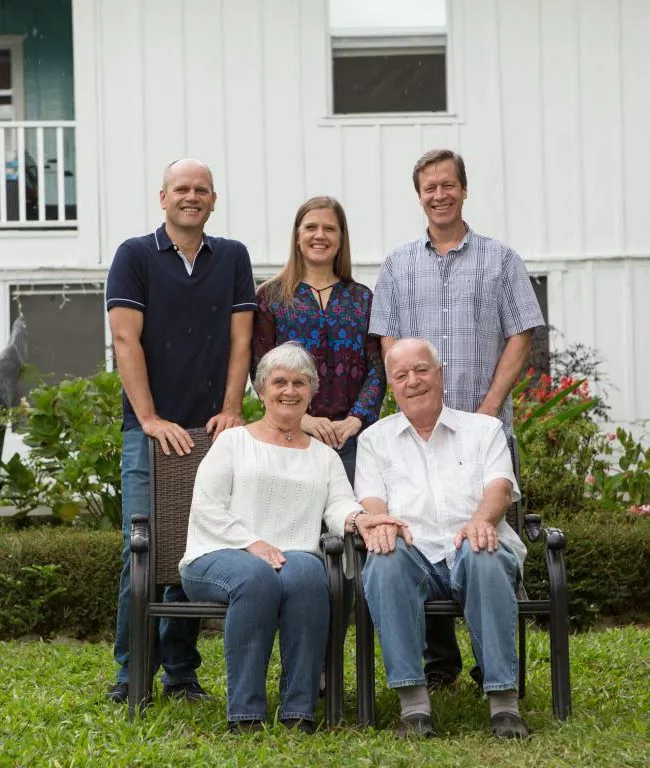
In 1997, the Peterson's purchased the land that would, later, become Jaramillo Farm. This land, on either side of the Baru volcano, was specifically chosen for its high altitude in hopes of developing a higher scoring, more vibrant and refined coffee. The earliest Geisha coffees were grown on this farm.
After Geisha's official debut at Best of Panama in 2004, much of Peterson's energy was focused on developing an infrastructure that would support superior lot separation, meticulous handling and a healthy auction format. As auction prices continued to grow, so did the demand for experiments such as coffee handling and the demand for lots.
In 2007, the Petersons began a decade-long coffee variety research project. More than 400 different varieties (or subspecies) have been planted on the Emerald Estate's newest farm in the high altitude of El Velo.
Red label, blue label, green label
Emerald Manor can be considered one of the first to do a grading of CURLY. Although there is no so-called grade, but there is a series. And the name that circulates in the market is: red label, blue label and green label. The reason is simple, they correspond to the series of trademarks are these three colors.

Esmeralda Special (Special Selection Series): commonly known as the Red Label
It is a collection of high altitude Geisha (1600 - 1800 m) with a cup test score of over 90 points. The red label beans come mainly from 2 farms, Jaramillo and CañasVerdes. Despite the challenges of growing and harvesting at altitude, Geisha's unique flowers and citrus aromatics sing brightest in the hills of Boquete. Also the estate will go to the races with the red label, hence the bidding lots in the red label. Bidding lots will have a unique number, each corresponding to an entire lot of a parcel. Probably the most famous is the Mario (Mario) plot in Jaramillo Farm.
Private Collection (Private Collection): commonly known as the Green Label
The Green Label is mainly produced from Jaramillo, Quiel and Cañas Verdes farms, at an altitude of 1600 - 1800 meters in plot-neutral, mixed batches. It mainly reflects the signature flavors of high-altitude Geisha.
Geisha 1500: commonly known as Blue Label
The Blue Label is defined as a blend of the three main sub-estates of the Emerald Estate Jaramillo, Canas Verdess, El Velo CURLY SUMMER COFFEE at an altitude of around 1500 meters. However, the Blue Label has been announced to be cancelled in 2021, leaving only the Red and Green Labels.
Estate plots
There are currently four plots of land in the Emerald Estate, and the high quality of the magnificent summer is produced mainly on the Jaramillo and Canas Verdess plots.
Jaramillo: annual rainfall of 4000mm, average daytime temperatures of 19-25°C, average nighttime temperatures of 11-15°C, average altitude of 1600 - 1700 m. The Jaramillo parcel is subdivided into 5 small parcels: Mario, Noria, Reina, Bosque, Buenos Aires.
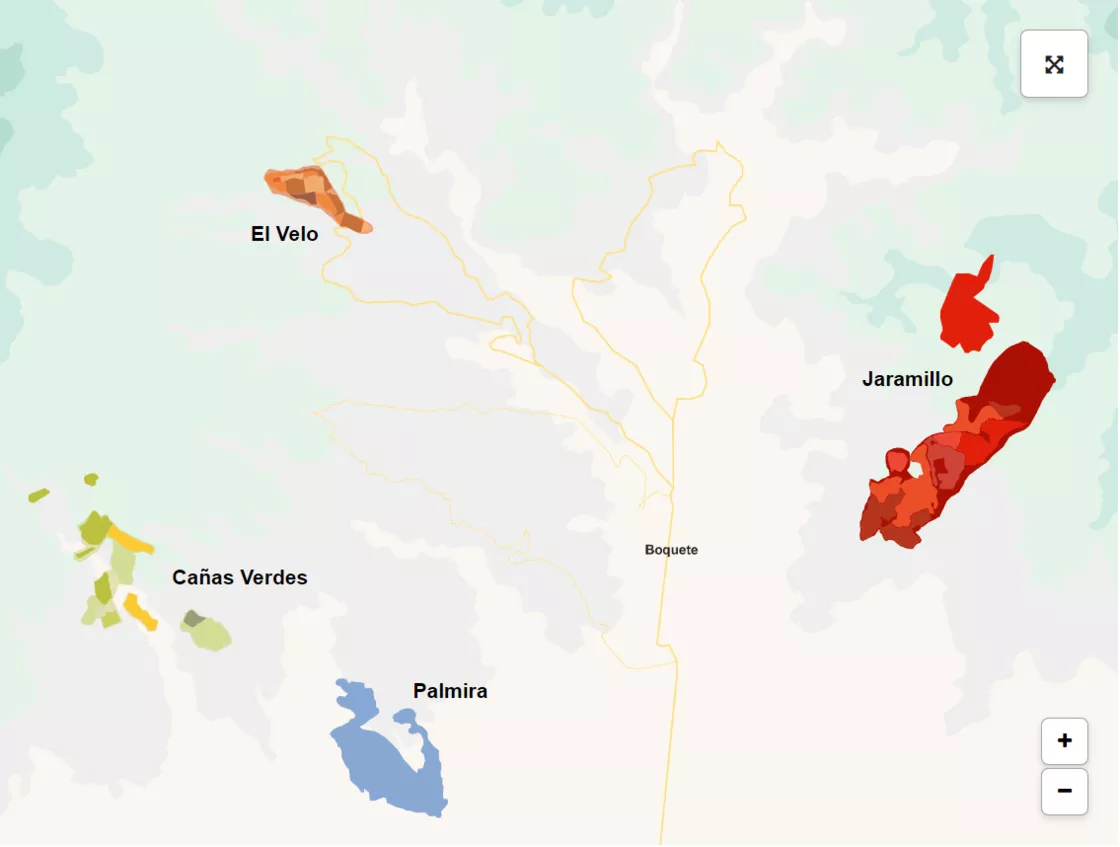
Canas Verdess: annual rainfall of 3500 mm, average daytime temperatures of 16 - 23°C and nighttime temperatures of 10 - 15°C, average altitude of 1600 - 1800 meters. The average temperature is 10 - 15°C and the average altitude is 1600 - 1800 m. Canas consists of a total of 9 small plots: Lino, Coronado, Fundador, León, Montaa, Trapiche, Chinta, Cabaa, Tumaco.
El Velo: This is the latest plot acquired by the Emerald Estate, with an average altitude of 1700 - 1900 meters. El Velo is divided into seven small plots: Guabo, Portón, Durazno, Higuerón, Higo, Buena Vista, Guila and Higo, and the other exotic varieties, such as Laurina, Pacamara, Mocca and SL28. guila.
Palmira: the first plot of land purchased by the Petersons in 1967. These 2 plots of Catuai, with separate trademarks, are currently planted mainly with Catuai; at an altitude of 1200 m and with an annual rainfall of 3500 mm, while the Diamond Mountain plot in Jaramillo is also planted with Catuai.

JENSEN FAMILY COFFEE (JANSON FAMILY COFFEE)
Jensen Coffee Farm is a family-owned estate established in 1941, originally as a cattle farm, founded by Carl Axel Jensen, an immigrant from Sweden. Their coffee plantations are located on the slopes of the Tisinga and Baru volcanoes in the Talamanca Mountains, at an average altitude of 1350 - 1700 meters. The farm combines the plantation area with a private nature reserve of 200 hectares, including wetlands, an important habitat for a large number of birds and wildlife. The temperature difference due to the high altitude, the nutrients from the volcanic soil, the natural springs, and the perfect blend of Pacific and Atlantic wind and sea currents add to the already rich rhythm of the CURLY summer.
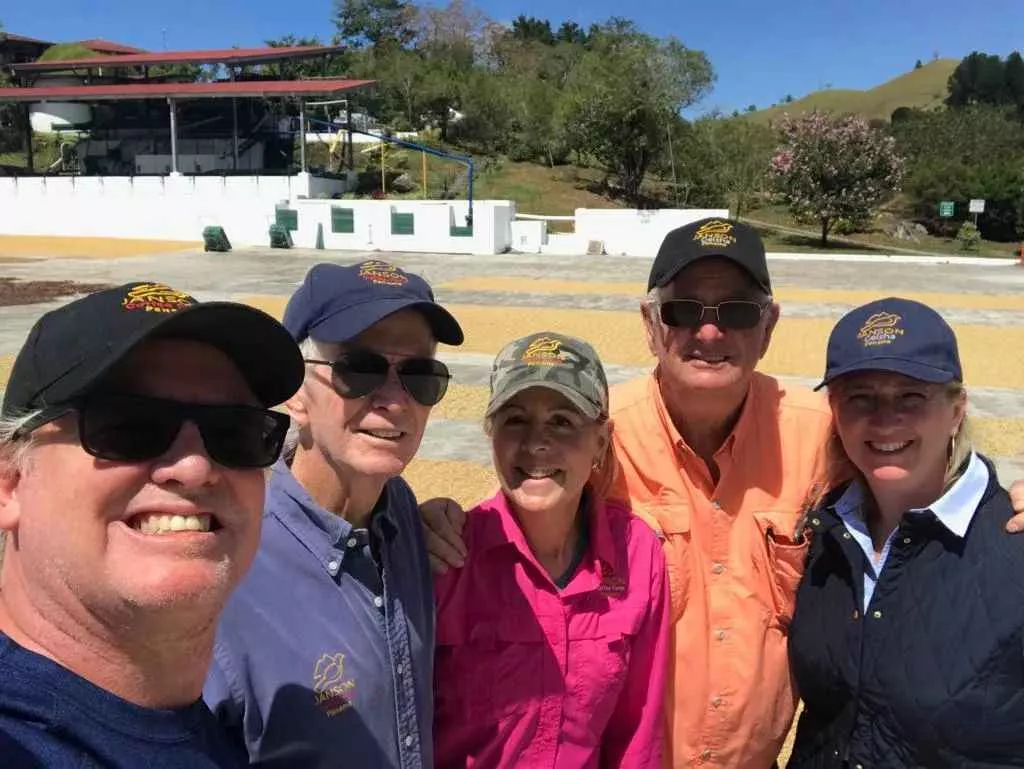
The Jensen family is now in its third generation of membership. However, it is still run by the first and second generation members of the Jensen family.
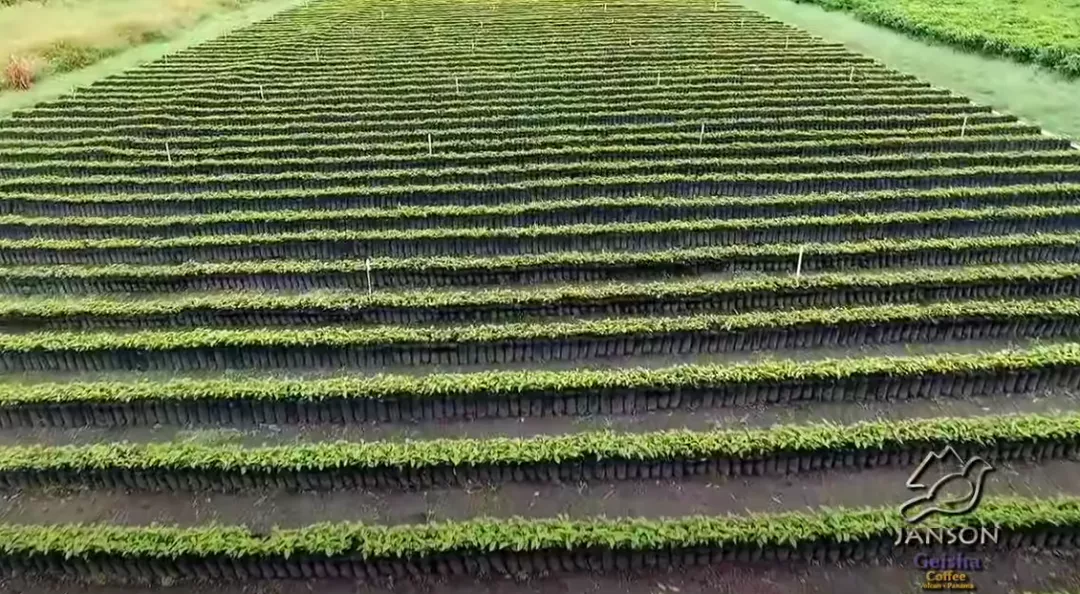
They have their own nursery and use selected Arabica seeds for their seedlings including; Green-Tip Geisha, Pacamara, and Catuai.

High quality production and harmony on the farm is their goal. They use enzymatic microorganisms to maintain the nutrient balance in the soil, no pesticides, no herbicides, etc. The farm is micro-managed on a batch-by-batch basis for traceability and quality control. The plantation is separated by a forest which acts as a natural barrier against pests and also protects the natural flora and fauna of the area.

400 solar panels produce energy for our farms and factories, plus all excess material from the process is used as fuel or fertilizer reused. Seeds from their forests are planted in nurseries for reforestation and water conservation. Water from springs is used in the water-washing process. They hope to work wholeheartedly to improve and protect the local environment.
BOP results
- 2020 BOP First Place in the Pacamara Division
- 2019 Panama Coffee Week First Place in CURLY Summer Sunshine Category, Second Place in CURLY Summer Wash Category
- 2019 BOP 2nd place in the CURL Summer Tanning Division and 2nd place in the Pacamara Division
- 2018 BOP CURLY SUMMER 3rd Place in the Wash Category
Finca Sophia
Established in 2008, Finca Sophia is located in the highlands of Panama, near the Nueva Suiza settlement and just down the road from Volcan. At 2,100 meters above sea level, Finca Sophia is one of the highest coffee farms in Panama, growing almost exclusively Geisha. this legendary coffee variety is paired with the extreme altitude of the farm to create this unique coffee. finca sophia was selected as the winner of the 2016 Good Food Award, and the following year, won first place in the BOP competition for washed In 2020, Finca Sophia won first place in the washed Corsica and second place in the sun-dried Corsica, and was awarded the Panama Cup. With these awards, Finca Sophia has established itself as a small but strong contender in the highly competitive Panama Best Coffee Competition.
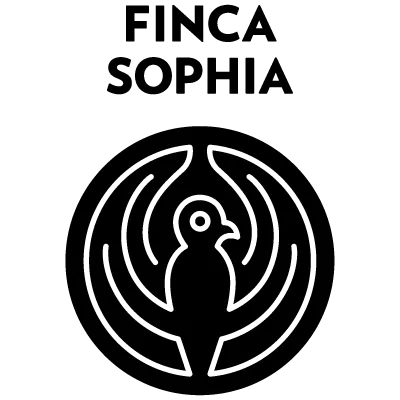
Finca Sophia owes its success to the skills and dedication, who has led the farm's team from day one. In addition, owners Helen Russell, Brooke McDonnell, Willem Boot and Catherine Cadloni, and farm manager David Pohl, contribute as a team to the ongoing management of Finca Sophia.
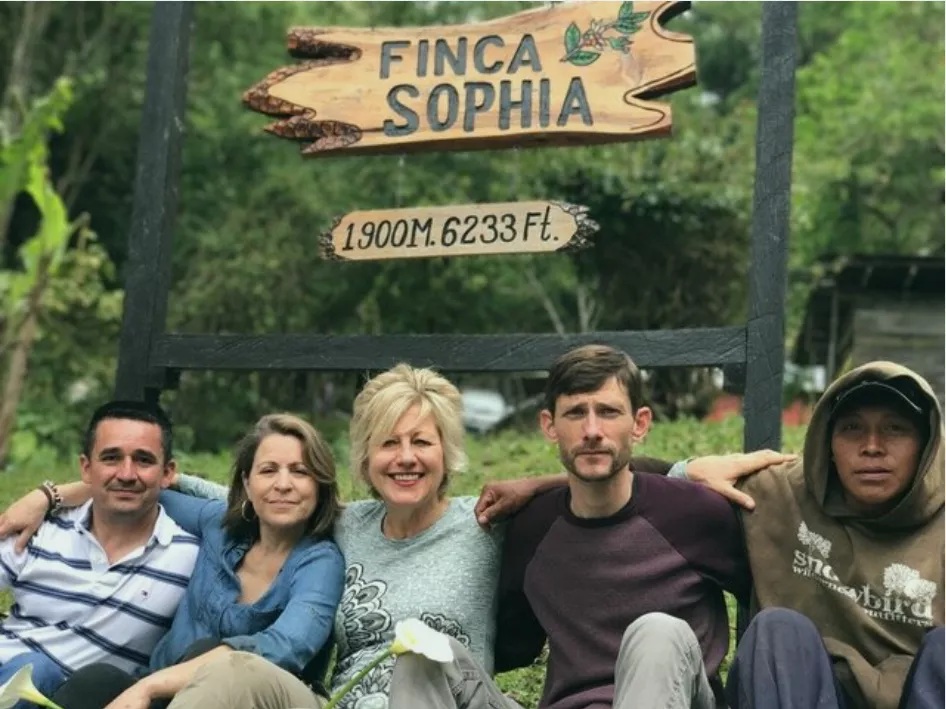
Hacienda Nuguo (Finca Nuguo)
Since 1960, the Gallardo family farm produced Typica, Caturra and Catuai coffee varieties at low altitudes until 2006, when Mr. José Manuel Gallardo Araúz saw the potential of Finca Nuguo and the success of Geisha and started growing Geisha. now. Café Gallardo is now one of the largest coffee growers in Panama.

Nuguo is exclusively in the Jurutungo area of Renacimiento in Chiriquí, Finca Nuguo has 5 unique lots, each with its own microclimate.
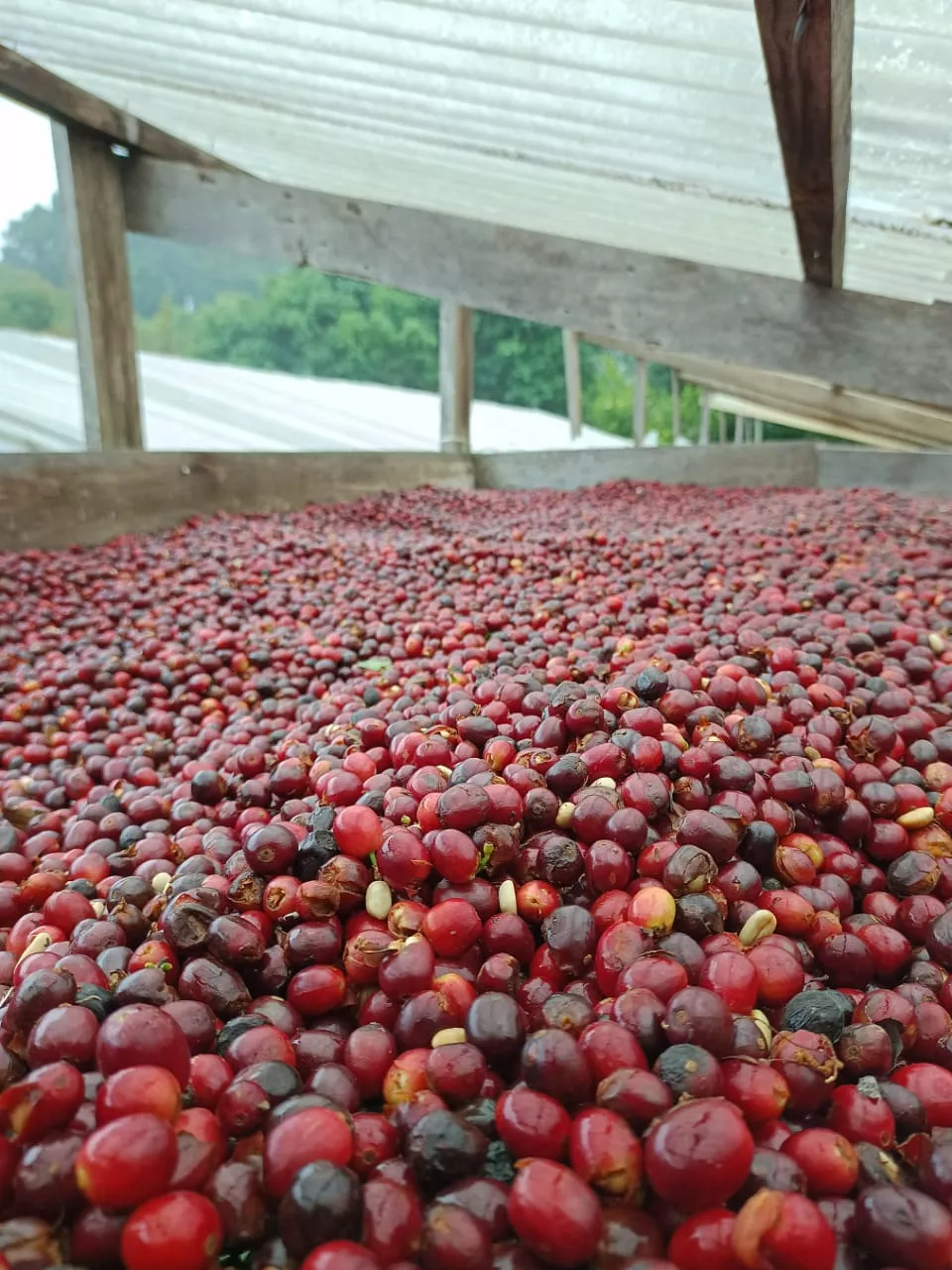
Jose Gallardo (Pocho) has a PhD in civil engineering and is using his experience in processing and drying experiments. This has helped cement his position as one of the best coffee producers in the world. His coffees have won individual awards at the BOP every year, reached the finals of the World Barista Championship twice, and ultimately won the overall title in 2021.
BOP results
- 2021 1st place in the Sun Tanning category, 2nd place in the Washing category
- 2020 Second place in the tanning category
Aurora Estate (Finca Auromar)
Hacienda Aurora, located in the province of Chiriquí, Panama, in the western valley of the Baru Volcano, the property consists of 30.5 hectares (75 acres) of land. The total arable area is 14.5 hectares, cultivated at an altitude of approximately 1650 - 1850 meters; the average annual temperature ranges from 16-25°C and the average annual rainfall is approximately 3500mm.
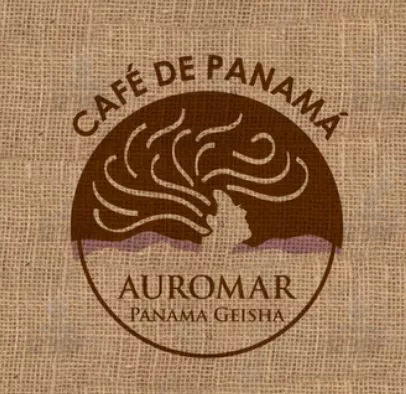
Roberto Brenes, owner of Hacienda Aurora, was once president of the Central Bank of Panama and also served as chairman of the Panama Stock Exchange. He was also chairman of the Panama Stock Exchange. Aurora was founded in 2006 and is named Auromar after his daughter (Aurora) and granddaughter (Mar), Aurora means Aurora in Chinese, hence the name Aurora Estate.
BOP results
- 2013 Washed Class Champion
- 10th place in the 2014 Sun Tanning Category
- 12th place in the solar category and 18th place in the wash category in 2015
- 2016 New Breed Sunset Division Champion
- 9th place in the Sunshine Division and 18th place in the Wash Division in 2017
- 5th place in the treatment group in 2020
- 2021 12th and 13th in the washed category
There are actually a lot of very good manors, but space is limited so I won't go into them all. A few more good estates are recommended.
- LAMASTUS Family: Elida Estate, EI Burro Estate, Luito Estate
- Hartmann Estate
- Deborah Estate (finca deborah)
- Finca La Mula (Mule Estate)
If you have a chance, you can buy it and try it. Different estates have their own differences, which is probably the charm of coffee.
Coffee Organization
Specialty Coffee Association of Panama (SCA)
In 1996, at a time when international coffee prices were low and boutique coffee was beginning to make its mark, seven coffee producers from the Poquette and Volcan regions came together to find a way to make Panama's coffee known around the world.

Coffee is Panama's most important agricultural product, and with the knowledge that the product is of good quality and that there is a growing global demand for high quality coffee gradually rose, they formed a consensus and began to focus on the fledgling market of fine coffee beans, and the establishment of the Society of Fine Coffee of Panama (SCAP) came into being.
Currently, SCAP has more than 50 active members who export their coffee all over the world and are recognized worldwide by winning awards in different international coffee competitions.
Best of Panama (Best of Panama)
Best of Panama (BOP) serves Panamanian growers interested in quality coffee specialties. Growers are blindly evaluated through innovation and cupping tests to verify the quality of their coffee. This event is 100% designed and organized by the Society of Fine Coffee of Panama (SCAP), a non-profit coffee grower/processor association in Panama.

Panama region, in addition to CURLY SUMMER, has coffee from several tree species such as Pacamara, Kadura and Kadouai, and in 2020 there is The auction of beans from these tree species has become entirely dedicated to CURLY SUMMER by 2021.
So if you want to buy high quality CURLY, you can recognize the BOP bidding lot.
lastly
This one, sort of, basically tells the story of Panama CURLY. There are still some of them that may not go any further, such as the treatment method. The usual Panamanian treatment methods are solarization, water washing, anaerobic, etc. The treatment methods are basically the same I'll skip over them for now. There are also some estates that have developed their own treatment methods, such as pressure anaerobic for Nugget, CO2 maceration, etc. Interested parties can search for their own information.